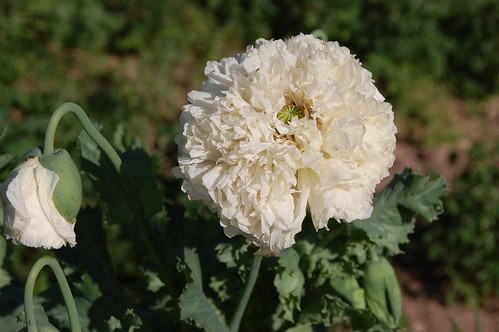
Leptura maculata - long horn beetle
The cats and I have had visitors, first some friends touring northern France in their very elegant campervan conversion and then Paul for a few days to celebrate his birthday which has been wonderful. Very social and busy. So all garden work, apart from harvesting stopped dead for a while.
It's also been incredibly hot, no news to anyone in Europe I suspect, but we managed to get sunburn even sitting in the shade which has to be a little bit remarkable for a western European summer. We don't have a weather recording station here, something for the xmas present list, but locally temperatures of about 31C were recorded yesterday, maybe hotter today. Tonight it's supposed to break with thunderstorms but apart from a rumble this afternoon all the clouds seem to have passed over and the sky has cleared again so I wonder if we've missed it. A pity in a way if we have as there's little chance of rain for another 10 days at least.

The opium poppies, peony flowered poppies, breadseed poppies, call them what you will are just starting to open. This white one on the vegetable plot is spectacularly frilled. The Carlin peas are also in full flower and just beginning to form teeny tiny pods. Fingers crossed for a good crop there.
The spinach seeds are still not ready to pick although the redundant male plants are dying away now. The outdoor tomatoes look good apart from a couple that are probably affected by virus (and should be removed). Plenty of courgettes, flowers on the french beans at last, even the cucumbers have perked up a lot.
In the seed area the Irish Preans are just coming into flower and the Striped Bunch are climbing their supports although they're not in flower yet. I took the first Elephant Garlic today to send back to the UK with Paul but will leave the others for a few days more.
Greenhouse tomatoes are looking fine, enjoying the heat and racing away.
As well as some coloured poppies, the only one of which flowering so far is the white one above, I had seed for some 'black' flowered plants. These are supposed to be peony flowered too but actually the first one to open is determinedly single. Lovely colour though and I hope its siblings will be more fluffy when they come out in a few days time.
So now it's back to being a hermit or a nun or just in solitary confinement for another three weeks until it's time for Paul to visit again.





















